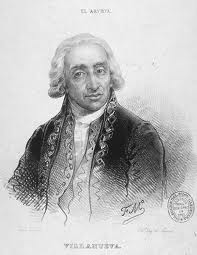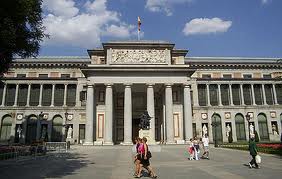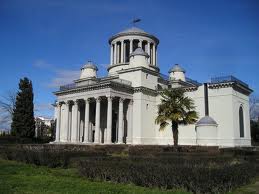Neoclassicism: Juan de Villanueva (1738-1811)
Juan de Villanueva was a Spanish architect from the 18th Century. Villanueva is considered to be one of the most famous Spanish architects of the Neoclassical style.
Juan de Villanueva (1738-1811)

Juan de Villanueva was born in Madrid to his father, Juan de Villanueva, a Spanish sculptor. His brother, Diego de Villanueva, came to be Juan's teacher and protector. At the age of eleven, Juan de Villanueva began to study in Madrid, at the 'Real Academia de Bellas Artes de San Fernando' (The Royal Academy of Fine Arts of San Fernando).
In 1758, Villanueva travelled to Rome in Italy, where he stayed for seven years studying in order to complete his training from the 'Real Academia de Bellas Artes de San Fernando'. During this time, Villanueva spent a lot of time studying and recreating the works of the ancient masters of art and architecture. He returned to Spain in 1765.
A year after his return to Spain, Juan de Villanueva travelled to Cordoba and Granada, along with José de Hermosilla and Juan Pedro Arnal, two other famous Spanish architects, in order to study the Mozarabic art and sculpture of those regions. The drawings and sketches that they made on this trip were later published in 1804.
After this trip, Juan de Villanueva settled in the Spanish capital, Madrid, where he was made an official Academic of the 'Real Academia de Bellas Artes de San Fernando'. In 1768, Villanueva was also named as the Architect for the Jeromes Monks Community of the Monastery of El Escorial, part of the Madrid community.

Juan de Villanueva built many pavilions for the Spanish Royal family to use such as the 'Casa de Infantes' (Princesses' House) in 1771 at Aranjuez, the 'Casita del Príncipe' (Little House of the Prince) in 1772 at El Pardo, and the 'Casita de Arriba' (The Upper Little House) in 1773 at El Escorial.
Also during this time, Juan de Villanueva received one of his largest commissions, the 'Jardín Botánico' (Botanical Garden) of Madrid. Originally, these gardens were meant to be designed by Sabatini, yet the project eventually came to Villanueva. From 1774 until 1781, Villanueva constructed the gardens which would also house the 'Museo de Ciencias' (Science Museum) and the 'Observatorio Astronómico'(Astronomical Observatory).
In 1777, the Spanish King, Charles III declared Juan de Villanueva as the official Architect of the Prince and Princesses. His works were therefore exclusively completed for the Spanish Royal Court. Charles IV then named Juan de Villanueva as the Major Architect.

His most famous work was the 'Gabinete de Historia Natural' (The Natural History Museum), which is more commonly known today as one of the most famous art galleries in Madrid, 'El Museo del Prado' (The Prado Musuem), after it was converted in 1814. Juan de Villanueva completed this piece of architecture from 1785 to 1787. The Prado Museum is still sometimes called the 'Edificio Villanueva' (The Villanueva Building) and is considered to be one of the best examples of Neoclassical architecture in Spain.
Juan de Villanueva made a great contribution to the city of Madrid, which is where the majority of his works can be found. Villanueva's other works include the 'Real Academia de la Historia' (Royal Academy of History), the 'Oratorio del Caballero de Gracia' (Knight of Gracia Oratory) and the 'Observatorio Astronómico' (Astronomical Observatory). He also helped to renovate the Plaza Mayor after a fire in 1790.
Villanueva's style of architecture was influenced by the architecture of Juan de Herrera. However this influence was also mixed with a large amount of the Neoclassical style. He focused significantly on correct proportions in his work. Juan de Villanueva had a large influence on other Spanish architects and he also helped them break away from the previous stranglehold of Baroque architecture.
